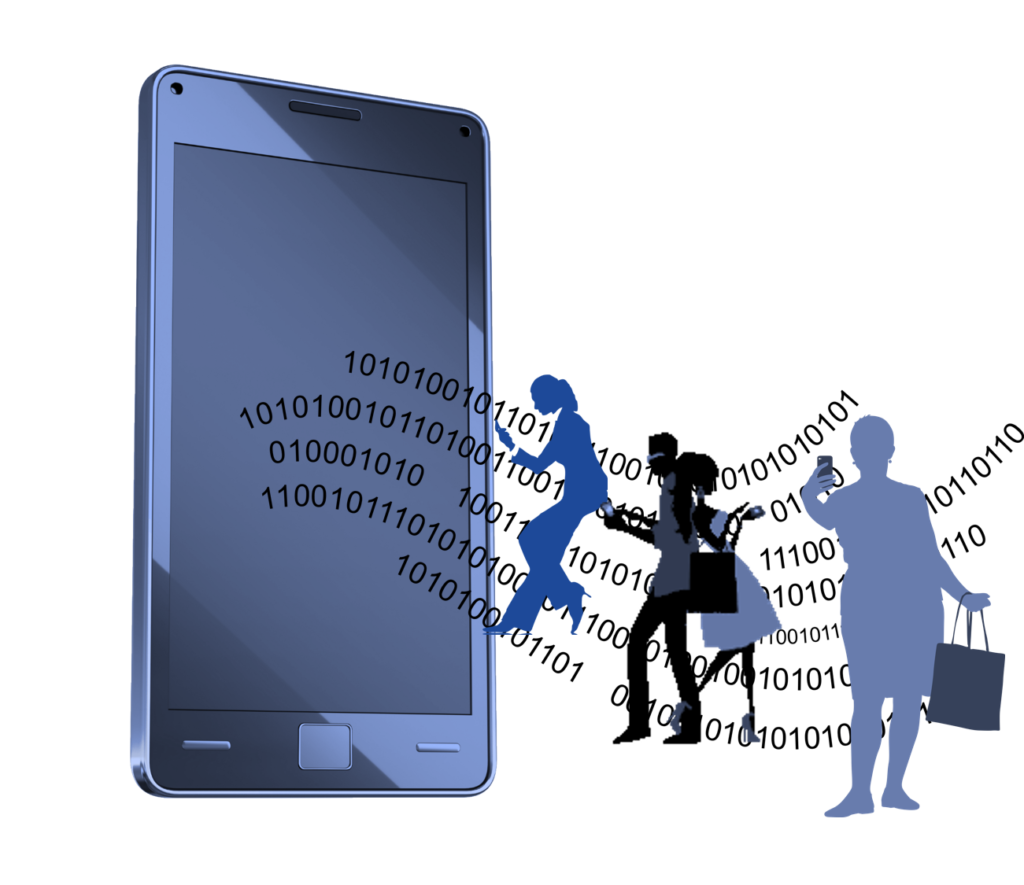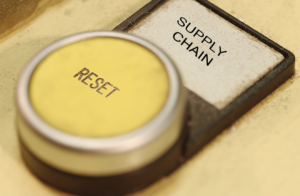The mobile digital path to purchase has been gaining traction year over year. Nick Ismail (@ishers123) predicts, “2018 is going to be a year of major changes for the retail business, driven mainly by the amazing growth in mobile commerce. The data shows that the continued rise of m-commerce is inevitable and unstoppable. … Today’s customers expect everything through their phones.”[1] Ismail has good evidence backing his prediction. For example, Rick Kenney (@rickkenney), Head of Consumer Insights at Salesforce Commerce Cloud, reports, “For the first time, [last holiday season] mobile commerce surpassed computers for retail traffic.”[2] Driving the increase in m-retail purchases are the two digital native generations — millennials and Generation Zers.[3]
Consumers and the Digital Path to Purchase
Ken Paetzold, Senior Product Marketing Manager at Applause, writes, “Digital has completely transformed how we shop, and no two customers are the same. They find out about, research, compare and purchase products in an infinite number of ways. They think in omnichannel.”[3] He adds, “Customers no longer interact with a single touchpoint of a brand’s digital offering — a website, or an app, or a store front — they interact with the brand as a whole. And in order to promote a positive customer experience, every interaction has to be consistent and integrated.” Daniel Newman (@danielnewmanUV), principal analyst of Futurum Research and CEO of Broadsuite Media Group, asserts this omnichannel world has forever changed the traditional marketing funnel.[5] He explains, “The marketing funnel goes something like this: Awareness, interest, consideration, intent, evaluation, decision. Normally, marketing is responsible for the first part of the funnel, and then sales takes over toward the end. However, the digital transformation has changed — and is continuing to change — the roles within the funnel. Technology has introduced new kinds of marketing tools that take the guesswork and grunt work out of marketing. Specifically, and thanks to data and analytics, marketers have a much more intimate picture of who their customers actually are.”
I think it’s fair to say to the marketing “funnel” is no longer an apt analogy. Once something enters the top of a funnel it has to come out the bottom of the funnel. In an omnichannel world, consumers are never trapped in a funnel. That’s why most analysts talk about paths to purchase or consumer journeys rather than a marketing funnel. Consumers can enter and leave the path to purchase at any point. They key to encouraging a consumer to complete the path to purchase is personalization. Although Newman might disagree the marketing funnel analogy is no longer applicable, he agrees personalization is the key to successful marketing. He writes, “Employing personalized marketing efforts like branded and targeted strategies make the customer feel as though their voice is heard.” Paetzold adds, “Understanding customers is the first crucial step on the path to tailoring customer journeys, and if you’re looking to expand your customer reach you’ll need to get feedback from multiple different segments. Working out what channels customers prefer, when and why they use them, involves getting feedback that’s indicative of the many, not the few.” If that sounds complicated, it is. Fortunately, emerging cognitive technologies can help. When Paetzold writes about feedback from the many not the few, he is referring to numerous sources of data, both structured and unstructured, being generated by today’s consumers, especially data generated by mobile devices. Cognitive analytic systems can help make sense of all that data.
Suggestions for Helping Consumers along Purchasing Journey
Even though the marketing funnel may be a defunct concept, consumers still go through the same decision stages (namely, awareness, interest, consideration, intent, evaluation, and decision) along the digital path to purchase. Julie Poast (@poastj), Director of Campaign Solutions at Valassis, asserts getting consumers through those stages has become more difficult. “Engaging (or even reaching) the constantly-connected, multi-tasking consumer,” she writes, “is not an easy feat.”[6] She labels the stages differently than Newman (namely, thinking, wanting, watching, acting and shopping) but both of their stages cover the same ground. Poast suggests each purchase stage should be considered a critical “moment” and an opportunity for marketers.
Thinking (Awareness, Interest) Stage
Poast suggests it takes multiple messages to reach a consumer during this stage. “Back in the 1970’s,” she writes, “Herbert E. Krugman wrote a paper on the effective exposure of media advertising, citing that a 3X exposure was needed to elicit a psychological response. According to Krugman, the first exposure elicits curiosity, the second exposure recognition and the third exposure decision.” Newman adds, “If you’ve made a good first impression, your potential customer has moved down the [path to purchase] and expressed interest in your product or service. Analytics, while potentially overwhelming, shed much needed light on customers, showing where they are and what messages are likely to pique their interest.”
Watching (Evaluation) Stage
For Poast, watching means two things. First, marketers must watch what consumers are doing and second, they must pay attention to what screens consumers are watching. “Consumers are a fast-moving target,” she writes. “It’s not enough to place any digital ad on any device — you must think about whom you are trying to reach and where, how and when they are most receptive to your message.” Cara Salpini (@CaraSalpini) adds, “It’s important to take into account key differences in the wants and needs of shopper demographics.”[7]
Wanting (Consideration) Stage
Poast suggests consumers need a nudge to get them to desire your product. “Incentives are powerful,” she writes. “Consumers — across generations — value saving money on items they purchase. Prosper Insights & Analytics 2017 data continues to show the strong influence coupons have on purchase decisions, ranking within the top three media influencers since 2010.” Newman adds, “Marketers want to turn a customer’s interest into action. To do that, they use predictive analytics once again to determine any additional messages that would make a difference for their audience. With the information learned from generated interest, … marketers effectively transition customers from ‘I like it’ to ‘I want it’.”
Acting (Intent) Stage
Newman notes this stage is often where consumers put things in carts and then abandon them. “The goal is to close the deal then and there, but if a customer leaves an item in the cart, marketers will then return to the previous steps. … It’s usually at that time AI offers would-be customers a discount or another promotion to lure them back in.” Poast notes even getting consumers to put something in shopping cart can be challenging. “Although there are many ways to elicit a consumer response,” she writes, “one method may be integrating print and digital media with a consistent message. … [In one study], 47% of Millennials said they would be more likely to respond if they saw a product advertised both online and in print, and 50% of parents noted this.”
Shopping (Decision) Stage
Newman notes cognitive technologies can help in the final stage of the consumer journey as well as previous stages. He explains, “Predicting customer behavior and closing deals is simplified by the 80/20 rule: 80% of revenue comes from 20 percent of the prospects, and 80 percent of the pipeline comes from 20% of the campaigns. Predictive analysis like AI identifies the 20 percent. Not only do we strive to close the sale, but the ultimate goal is to earn buyers’ trust, effectively creating loyal, come-again customers.” Poast adds, “Both location and device make a difference in capturing consumer attention to digital ads.” That’s why she insists each stage is a “moment” that must leveraged to close the deal. Kenney agrees with Poast that location and device are both important and he observes that cognitive technologies are making an impact. “The role of AI in the shopper’s path to purchase becomes even more clear as when we look at how shoppers continue to research products across all digital channels before making a purchase. [In 2017], shoppers used the expected channels, such as websites (74%), email (43%), social media (38%) and mobile apps (36%) to research products. However, what’s surprising is the rapid embrace of voice-enabled digital assistants such as Amazon Echo and Google Home, used by 40% of millennials as they research merchandise before buying online.”
Summary
Paetzold concludes, “Digital innovations provide us with infinite freedom of choice and of movement, allowing us to shift between digital channels as we please, and take control of the shopping experience without the influence of the brand.” Ismail insists the power now rests with the consumer and mobile technology is the consumer’s most powerful tool. “The key to staying in business will be customer retention,” Ismail writes. “It’s not enough to make a single sale. And again, mobile will be the key to customer loyalty. Customers now expect to be able to everything via their phones. This means the entire customer care process will have to adopt a mobile-first approach. This will cover everything from tracking to reviews, complaints and returns.” Retailers who master mobile and omnichannel operations are likely to thrive in the years ahead.
Footnotes
[1] Nick Ismail, “2018 is when m-commerce changes retail forever,” Information Age, 12 January 2018.
[2] Rick Kenney, “Holiday Digital Shopping Dominated 2017: Here’s Why,” Multi Channel Merchant, 1 January 2018.
[3] Cara Salpini, “Gen Z, millennials make up nearly half of Black Friday shoppers,” Retail Dive, 13 October 2017.
[4] Ken Paetzold, “How Brands Can Understand Customer Journeys,” Business Computing World, 2 October 2017.
[5] Daniel Newman, “How Will Digital Transformation Change the Marketing Funnel?” Forbes, 3 October 2017.
[6] Julie Poast, “Motivating the Dynamic Shopper Along Their Path to Purchase,” Multi Channel Merchant, 11 October 2017.
[7] Salpini, op. cit.





